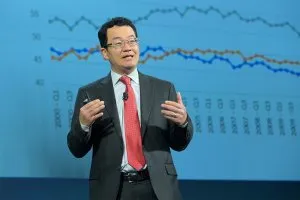Though modest improvement is expected across commercial real estate sectors, your clients’ needs may change as technology and consumer lifestyles impact their businesses.
Originally published by REALTOR® Magazine. Read full article here: http://magazine.realtor/commercial/feature/article/2017/05/commercial-forecast-solid-growth-shifts-in-property-use
Despite slight easing of demand across some sectors, positive fundamentals in the economy point to modest improvement in commercial real estate activity. But sweeping changes in technology and consumer lifestyles likely will change the needs of commercial clients in the years ahead.
Completions, net absorption, and vacancy rates across most sectors will remain solid moving into 2017, George Ratiu, NAR’s director of quantitative and commercial research, said during the REALTORS® Legislative Meetings & Trade Expo in Washington, D.C. The retail sector, which is grappling with changes in consumer spending patterns and the growth of ecommerce, is facing some headwinds. Ratiu forecasts vacancies to increase from 12 percent in 2016 to 12.6 percent at the end of this year.
Department stores and other big retailers are trying to adjust to changing consumer preferences. Small discount grocery retailers such as Aldi and Lidl, which had little or no presence in the United States just a few years ago, are starting to make inroads as young urban households look for low-cost convenient stores. Restaurants and bars are also doing well.
Office properties are under some pressure as the economy shifts to a more mobile workforce requiring smaller, more flexible space—but occupancy continues to hold up. Ratiu forecasts office vacancies to drop from 13 percent last year to 12.9 percent at the end of this year.
Industrial buildings, benefitting from rising trade and ecommerce, are seeing strong absorption and rent growth. Ratiu said the sector saw 257 million square feet of net absorption last year and growth of 6.6 percent in price per square foot. Vacancies are expected to improve from 9.4 percent last year to 9.1 percent at the end of this year.
During the session, Lawrence Yun, chief economist at the National Association of REALTORS®, also pointed to growth in data centers, which is being fueled by companies such as Uber and Amazon. These companies’ business models require the storage of large amounts of data.
Multifamily rental properties, which have seen strong gains in rental rates since the end of the last housing crisis, are expected to continue seeing low vacancy rates, from 6.3 percent last year to 6.2 percent at the end of this year.
Ratiu said the performance of global economies in the year ahead will be critical to the future health of commercial real estate sectors. Capital from global investors dipped 20 percent in the first quarter of this year, but some markets in the U.S.—including San Francisco, Dallas, and Houston—continue to see strong inflows.
For smaller commercial properties, which comprise the bulk of commercial REALTORS®’ business, lending standards are tightening as regulators talk about containing any froth in the market.








